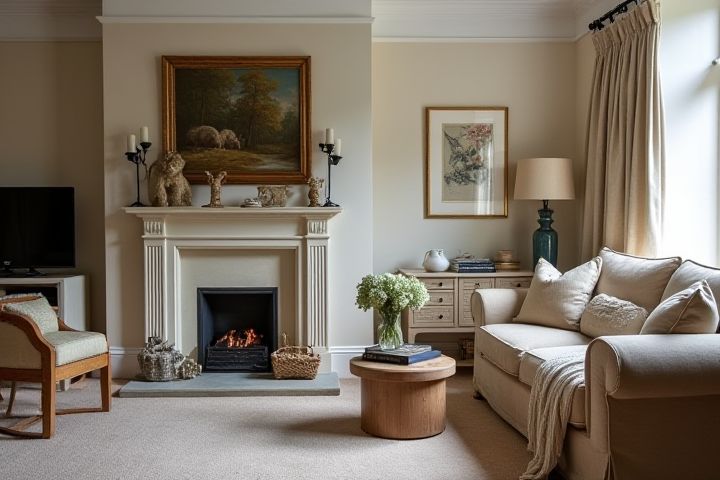
To determine the best house style for your lifestyle, consider factors like your daily routines, family dynamics, and personal tastes. If you enjoy hosting gatherings, an open floor plan with a spacious kitchen and living area may be ideal for socializing. For small families or individuals, a cozy cottage or bungalow can provide a charming and low-maintenance environment. If you prioritize outdoor space, look for a modern home with large windows and a seamless indoor-outdoor flow. Additionally, if sustainability is important to you, a contemporary eco-friendly design featuring energy-efficient materials and green technologies would align with your values.
What House Style Suits My Lifestyle
Location and neighborhood
When choosing a house style that complements your lifestyle, consider the characteristics of your location and neighborhood. In urban areas with a vibrant culture, a modern townhouse or loft may suit your desire for convenience and proximity to amenities. Conversely, if your environment features natural beauty and tranquility, a craftsman or cottage-style home can enhance your connection to the outdoors while providing a cozy atmosphere. Assess the architectural styles common in your neighborhood to ensure your home harmonizes with the community's aesthetic and enhances your living experience.
Family size and future growth
If you're considering a house style that accommodates a growing family, an open-concept layout is ideal, allowing for easy interaction and flexibility. A two-story home with multiple bedrooms can ensure privacy and personal space for each family member while providing options for future expansion, such as adding a finished basement or converting an attic. Look for homes featuring communal spaces, such as large kitchens and living rooms, which foster bonding and make family gatherings enjoyable. Incorporating outdoor areas, like a backyard or patio, can enhance your family's recreational activities and create a welcoming environment for gatherings.
Outdoor space or garden area
A contemporary house style with an emphasis on open floor plans and large windows can beautifully integrate with your focus on outdoor space. You might consider features such as expansive patios or decks that promote seamless transitions between indoor and outdoor living. Incorporating elements like biophilic design, which emphasizes natural light and greenery, can enhance your connection to nature. Selecting native plants for your garden area will not only complement your home's aesthetic but also support local wildlife and require less maintenance.
Maintenance and upkeep requirements
For a low-maintenance lifestyle, consider a contemporary or modern home style characterized by minimalist design and efficient use of space. Look for materials such as fiber cement siding or metal roofing, which require less upkeep compared to traditional wood. Single-level floor plans further simplify maintenance by reducing the need for extensive cleaning and upkeep. You may also want to incorporate xeriscaping in your outdoor space to minimize landscaping care while enhancing aesthetic appeal.
Commute and transportation access
For optimal commute and transportation access, consider a townhouse or a condominium located near urban centers or public transit stations. These styles often feature compact living spaces that allow for efficient movement and reduced travel times, making your daily commute shorter and more manageable. A home within walking distance to transportation hubs, such as bus stops or subway stations, can enhance your lifestyle by saving hours each week that would otherwise be spent in transit. Prioritizing these factors not only boosts your accessibility but also contributes to lower car dependency, promoting a more eco-friendly way of living.
Budget and financial considerations
When selecting a house style that aligns with a budget-conscious lifestyle, consider a compact, energy-efficient design that optimizes space and minimizes utility costs. The average cost of building a tiny house ranges from $10,000 to $30,000, making it a popular choice for those looking to downsize. Look for features like open floor plans, which can create a sense of spaciousness while keeping construction expenses low. Additionally, investing in sustainable materials can lead to long-term savings through reduced maintenance and energy efficiency.
Energy efficiency and sustainability
A modern sustainable house style, such as the eco-friendly minimalist design, aligns perfectly with your focus on energy efficiency and sustainability. This style often incorporates materials like reclaimed wood, bamboo, and recycled metal, promoting a lower environmental impact. Features such as solar panels, green roofs, and high-efficiency windows contribute to reduced energy consumption while enhancing natural sunlight. By prioritizing smart home technology, you can efficiently manage heating, cooling, and lighting, ensuring your living space reflects your commitment to sustainability.
Proximity to amenities and services
A bungalow style home may suit your lifestyle, particularly if you prioritize proximity to amenities and services. These single-story residences often feature open floor plans that promote easy movement, making them ideal for quick access to daily necessities. Located in walkable neighborhoods, bungalows provide convenience to local shops, parks, and public transport, enhancing your overall quality of life. Consider a modern urban design that incorporates sustainable features, ensuring you enjoy both accessibility and environmental responsibility.
Architectural design and aesthetics
Modern architecture often suits lifestyles that prioritize both architectural design and aesthetics, featuring clean lines and open spaces that promote a sense of tranquility. The incorporation of large windows maximizes natural light, creating visually striking interiors while enhancing energy efficiency. Sustainable materials, like bamboo or reclaimed wood, not only elevate aesthetic appeal but also align with environmentally conscious living. If you appreciate minimalism, the sleek, uncluttered spaces often found in contemporary homes will resonate with your design preferences.
Flexibility for renovations or upgrades
A contemporary open-concept house style is ideal for your need for flexibility in renovations or upgrades. This design typically features spacious living areas and minimal interior walls, allowing for easy reconfiguration as your lifestyle evolves. Opting for modular components can make it simpler to add rooms or adjust layouts; keep an eye out for spaces that incorporate smart storage solutions, as these can help maintain organization during changes. Consider using neutral color palettes and versatile materials that can adapt to new decor trends, enhancing the longevity of your home's aesthetic.
